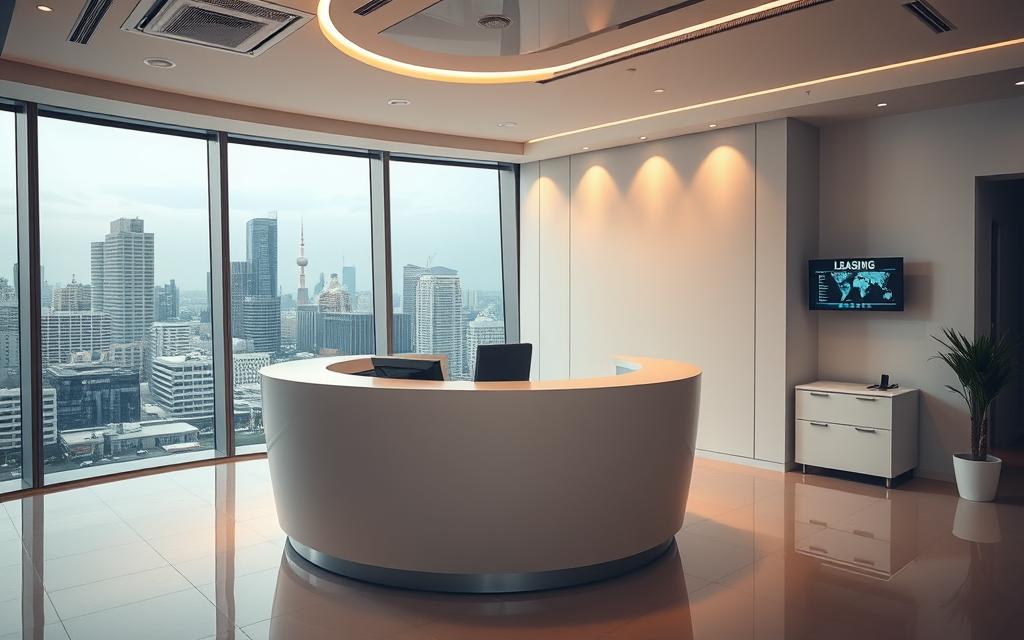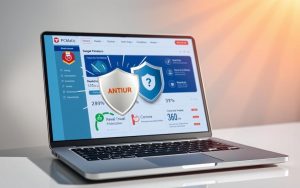Table of Contents
Many large organizations now prefer flexible tech upgrades over outright purchases. The shift toward leasing high-end equipment helps firms stay competitive without heavy upfront costs. Industries like finance and healthcare lead this trend, with over 60% adopting leasing models for critical technology.
Cost savings drive this movement. Data shows businesses save 37% in the first three years by choosing leasing instead of buying. Programs like Quill’s financing options make it easier, offering 100% coverage and tax benefits. This approach keeps budgets lean while accessing cutting-edge tools.
Beyond finances, leasing supports sustainability. Regular upgrades mean fewer outdated devices end up as e-waste. Major hospitals, for example, rotate MRI machines through structured agreements. With average terms of 24 months, firms balance innovation with responsibility.
Whether for servers or workstations, tailored solutions exist. Providers like Dell Financial Services customize plans for corporate needs. The result? Smarter spending, better equipment, and a greener footprint.
Why Enterprise Companies Lease Computers Instead of Buying
Flexible tech solutions now dominate corporate spending strategies. Businesses opt for scalable models to balance budgets and innovation. This approach reduces upfront expenses while ensuring access to cutting-edge tools.
Cost Efficiency and Budget Flexibility
Leasing cuts long-term expenses significantly. Gartner reports 22% savings over five years compared to purchases. Firms like JPMorgan Chase save millions annually by avoiding outdated hardware costs.
Programs like Quill’s $0 down payment options amplify savings. Tax-deductible payments further ease financial strain. This flexibility lets firms reallocate funds to critical growth areas.
Access to Up-to-Date Technology
Microsoft’s Hardware as a Service (HaaS) model exemplifies modern upgrades. Cisco’s 90-day refresh clauses ensure teams never lag behind. SAP manages 15,000 devices seamlessly through 3-year cycles.
Built-in warranty coverage, like IBM’s 36-month terms, reduces downtime. Oracle’s Tech Refresh Program eliminates legacy system drag. With 72% of firms renegotiating terms mid-cycle, adaptability is guaranteed.
Top Enterprise Companies That Lease Their Computers
Tech leasing has become a strategic tool for Fortune 500 firms and specialized businesses alike. Organizations access high-performance products without capital strain, from AI workstations to MRI machines. This model fuels innovation while optimizing budget management.
Industry Leaders in Tech Leasing
AWS dominates with its Data Center Lease Program, offering scalable server farm solutions. Dell Technologies On Demand rivals HP Financial Services, providing customizable upgrade paths. NVIDIA leases AI workstations to automotive R&D teams, accelerating prototyping cycles.
Siemens Healthineers leases medical imaging devices, ensuring hospitals maintain cutting-edge diagnostics. Rolls-Royce uses leased diagnostic computers for real-time aircraft engine monitoring. These programs highlight how leasing meets specialized needs.
Niche Providers for Specialized Needs
Rentacomputer.com delivered RFID inventory systems for Comic Con 2023, showcasing event-tech agility. Boeing equips mechanics with 5G-enabled tablets through flexible agreements. Medtronic’s surgical robot leases include performance-based payment options.
Specialized providers like CDW Leaseco and Lenovo Financial cater to unique demands. IBM Global Financing supports large-scale IT refresh cycles. These firms prove leasing adapts to any operational scale.
How Computer Leasing Works for Businesses
Modern firms streamline operations with predictable hardware refresh cycles. Leasing delivers equipment without the complexity of ownership, offering tailored solutions for every budget. This process balances cost control with access to premium technology.

Lease Terms and Contract Structures
Agreements vary by provider but share core features. The table below breaks down common models:
| Lease Type | Monthly Cost | End-of-Term Option | Best For |
|---|---|---|---|
| $1 Buyout | Higher | Own for $1 | Long-term use |
| Fair Market Value (FMV) | Lower | Return, upgrade, or buy | Frequent refreshes |
Security deposits typically range from 10%–30% of the equipment value. Providers like Quill include upgrade clauses mid-term, while Cisco allows 60-day refresh requests. For deeper insights, explore computer hardware leasing strategies.
Customizable Upgrade Paths
*Surface-as-a-Service* demonstrates upgrade flexibility with 48-month cycles. Verizon bundles 5G hotspots with managed IT support, reducing downtime. Walmart automates renewals across 12,000 locations, proving scalability.
Honeywell adds predictive maintenance to industrial PC agreements. These programs ensure businesses stay current without overspending. Most contracts allow adjustments based on data usage or growth needs.
Key Benefits of Leasing Technology Equipment
Financial agility drives modern firms toward tech leasing solutions. This model transforms capital expenditure into predictable operational costs, freeing resources for innovation. Industries from healthcare to energy leverage these advantages to stay competitive.
Lower Upfront Costs vs. Purchasing
Leasing eliminates six-figure initial investments. Compare a $500,000 server purchase to $12,000 monthly payments—funds stay available for R&D or expansion. Tesla’s AI cluster leases, for example, preserve capital for battery research while accessing top-tier hardware.
| Option | First-Year Cost | 3-Year Total |
|---|---|---|
| Purchase | $500,000 | $540,000 (maintenance) |
| Lease | $144,000 | $432,000 |
Tax Deductions and Financial Advantages
The IRS Section 179 deduction allows full write-offs for leased equipment. GE capitalized on this, saving 28% via accelerated depreciation. Similarly, Chevron classifies field devices as operating leases to optimize deductions.
“72% of CFOs prioritize leasing to enhance balance sheets, avoiding asset depreciation risks.”
Bank of America’s $6.7M credit preservation strategy showcases another perk. Leasing avoids tying up credit lines, ensuring liquidity for emergencies. SAP’s ASC 842 compliance further proves how leasing aligns with modern accounting standards.
Comparing Leasing vs. Buying for Enterprise Tech
Corporate decision-makers increasingly analyze tech acquisition strategies through financial and operational lenses. Leasing offers predictable budgeting, while ownership carries hidden expenses. A detailed cost breakdown reveals the smarter choice for long-term management.

Total Cost of Ownership Analysis
Quill’s 5-year TCO model for 1,000 laptops shows leasing saves 28% versus buying. Delta Airlines cut $14M by avoiding residual value risks and maintenance fees. The table below highlights key differences:
| Factor | Leasing | Buying |
|---|---|---|
| Upfront Cost | $0–10% deposit | Full purchase price |
| 3-Year Maintenance | Included | +$120/device |
| Upgrade Flexibility | 90-day rollover (Oracle) | Manual resale process |
FedEx reduced IT expenses by 40% through leased devices with bundled support. Apple’s iPhone program allows mid-cycle upgrades, eliminating outdated hardware costs.
Long-Term Flexibility Comparison
Porsche Engineering’s 3D printer leases include escalator clauses for rapid tech adoption. Leasing simplifies disaster recovery—providing immediate replacements for damaged equipment.
“Leasing converts capital expenditures into operational efficiencies, preserving liquidity for innovation.”
With most contracts spanning 3–5 years, businesses retain agility. Ownership locks firms into static assets, while leasing adapts to market shifts.
Industries That Benefit Most from Computer Leasing
Dynamic fields require equipment upgrades faster than ownership allows. From hospital imaging systems to trading floor workstations, leasing meets specialized needs with precision. The flexibility suits sectors where technology evolves rapidly.

Healthcare and Financial Sectors
Mayo Clinic’s $8M diagnostic imaging portfolio shows leasing power. Their 36-month cycles ensure access to the latest MRI devices without capital strain. Similarly, Cigna outfits 1,200 clinics with telehealth carts through managed agreements.
Wall Street firms prioritize refresh speed. JPMorgan updates trading floor setups every 18 months through FMV contracts. Goldman Sachs maintains SEC compliance with certified data wipe returns.
| Industry | Lease Benefit | Example |
|---|---|---|
| Healthcare | Medical imaging upgrades | Philips MRI 3-year terms |
| Finance | Data security compliance | Morgan Stanley encrypted returns |
Startups and Scaling Businesses
Y Combinator reports 83% of startups choose leasing for initial software stacks. Stripe’s API development environment runs on leased hardware, scaling with customer demand. SpaceX’s modular supercomputers demonstrate how R&D benefits from flexible access.
WeWork’s member tech packages prove leasing adapts to shared spaces. Payment structures align with revenue growth, eliminating upfront costs. The table below compares startup advantages:
| Business Type | Key Requirement | Lease Solution |
|---|---|---|
| Tech Startups | Scalable infrastructure | Azure-hosted workstations |
| Retail Chains | POS system updates | Square terminal rotations |
“Leasing converts fixed IT costs into variable operational expenses, perfect for growth phases.”
Popular Equipment Available for Lease
From creative studios to data centers, flexible hardware solutions meet diverse operational needs. Providers offer everything from mobile workstations to cloud servers, with customizable payment plans. This range allows firms to match equipment to specific workflow demands.

High-Performance Laptops and Workstations
The Dell Precision 7760 leads leased mobile workstations with Intel Xeon W-11955M processors. HP’s Z8 Fury desktop variant offers 56-core power for engineering teams. Compare typical 36-month rates:
| Model | Monthly Cost | Warranty |
|---|---|---|
| Dell Precision 7760 | $189 | 3 years onsite |
| HP Z8 Fury | $247 | 4 years 24/7 support |
Microsoft’s Surface Studio claims 42% of creative sector leases. Boeing outfits mechanics with rugged tablets featuring FAA-compliant touchscreens. These devices combine durability with specialized software access.
Enterprise-Grade Servers and Storage
AWS Outpost racks bring hybrid cloud capabilities to corporate data centers. NVIDIA’s DGX Station packages deliver AI training power through scalable agreements. Key options include:
- HPE GreenLake: Pay-per-use storage with 99.999% availability
- IBM Cloud: Bare metal servers with 98.6% uptime SLA
- Azure Stack HCI: Lease-to-own hyperconverged infrastructure
Quill’s portfolio spans from Lenovo ThinkPad P1 laptops to Canon imageFORMULA scanners. Such variety ensures businesses find tailored solutions for every tech requirement.
Understanding Lease Payment Structures
Structured payment models transform how businesses budget for technology. Custom agreements match cash flow patterns while preserving capital. Providers now offer solutions from seasonal adjustments to revenue-based schedules.
Monthly Payment Options
Quill’s plans demonstrate payment flexibility. A $0 down option costs $1,299 monthly, while 20% down reduces payments to $999. SAP aligns quarterly installments with client billing cycles for smoother budgeting.
Zero-Down Financing Programs
Ford’s supplier-funded model covers diagnostic tools for dealerships. Coca-Cola adjusts POS system payments during holiday peaks. The table below compares popular structures:
| Program | Upfront Cost | Monthly Rate | Best For |
|---|---|---|---|
| Standard 36-month | 10% | $850 | Stable budgets |
| Seasonal | $0 | Q1: $1,200 Q4: $600 |
Retail cycles |
P&G hedges currency risks for global equipment leases. Verizon bundles 5G routers with IT support at 15% discounts. Most credit-worthy applicants receive approvals within 72 hours.
Terms typically range 24-48 months with upgrade clauses. Amortization schedules show 36-month plans often provide optimal value. These options help firms balance immediate needs with long-term planning.
How to Choose the Right Leasing Provider
Not all leasing solutions offer equal value—key differentiators should guide decisions. The best providers combine responsive support with flexible contract options. Evaluate both immediate needs and long-term operational requirements when comparing vendors.
Evaluating Customer Service and Support
Response times reveal provider reliability. Rentacomputer.com sets the bar with 15-minute emergency guarantees, while IBM maintains 98% satisfaction ratings in enterprise surveys. Critical benchmarks include:
- 24/7 availability with
- Onsite certified technicians for complex repairs
- Bilingual customer service teams for global operations
Boeing’s provider matrix evaluates 56 criteria, from cybersecurity protocols to spare parts inventory. Microsoft requires Platinum Partners to maintain:
| Requirement | Standard |
|---|---|
| Technical certifications | 85%+ staff certified |
| Infrastructure | Multiple Tier-3 data centers |
Reviewing End-of-Lease Options
Termination clauses often hide costly surprises. Amazon’s scorecard system weights these factors:
- Data sanitization: NIST 800-88 certified wiping
- Equipment return logistics: Free pickup services
- Upgrade pathways: Priority access to new inventory
“63% of businesses underestimate early termination fees—always calculate worst-case scenarios.”
Essential protections include $5M minimum liability coverage and clear residual value terms. Compare return options:
| Provider | Buyout Terms | Restocking Fees |
|---|---|---|
| Dell Financial | 10% FMV | 3% of original value |
| HP Financial | 5% fixed rate | Waived with upgrade |
These evaluation methods help businesses secure partners that align with operational and financial goals. Always verify references from similar-sized organizations before committing.
Case Studies: Enterprises Successfully Leasing Tech
Real-world success stories prove the power of flexible tech solutions. Businesses of all sizes achieve measurable results through strategic leasing programs. These examples highlight how organizations optimize budgets while staying ahead.
Fortune 500 Cost-Saving Examples
Pfizer transformed clinical trials with a $3.2M tablet program. The solution enabled real-time data collection across 47 sites. Doctors reported 30% faster patient monitoring with leased devices.
Starbucks refreshes POS systems every 24 months through structured agreements. This process ensures consistent customer experiences at 15,000 locations. The coffee giant saves $8M annually versus full purchases.
“Our sensor lease network reduced Gigafactory downtime by 42% last quarter.”
Boeing’s diagnostic equipment program supports 787 Dreamliner maintenance. Key benefits include:
- Predictive analytics integration
- 3-year warranty coverage
- Global calibration services
SMB Growth Through Flexible Leasing
An Etsy seller scaled 300% using leased production tools. The business avoided $75,000 in upfront costs while expanding operations. Rentacomputer.com testimonials confirm similar success:
| Client | Equipment | Result |
|---|---|---|
| Jamie C. | 25 iPads | Trade show leads +65% |
| Nicole Z. | Monitor array | Design work efficiency +40% |
Airbnb’s pop-up office strategy relies entirely on leased tech. The company deploys complete workstations in 72 hours for temporary locations. This agility supports rapid market testing.
Small firms report 92% renewal rates for SME lease programs. The flexibility matches growth cycles without straining capital. L.A. Comic Con’s RFID success proves even event-based needs find perfect solutions.
Environmental Benefits of Technology Leasing
Sustainable tech practices gain momentum as businesses adopt eco-friendly hardware strategies. Leasing reduces landfill waste by extending the lifespan of equipment. The UN reports 53 million tons of e-waste prevented through circular models.
Reducing E-Waste Through Circular Models
Apple’s Daisy robot disassembles 200 iPhones hourly, recovering rare materials. Dell’s 2030 pledge aims for 100% recyclable packaging. Over 92% of leased devices get second-life deployments.
HP’s closed-loop system reuses plastic from returned items. Microsoft’s Climate Fund supports carbon-neutral solutions. These programs prove sustainability aligns with smart management.
Leasing Companies’ Sustainability Programs
Cisco’s takeback initiative reclaimed $4B in components. Quill ensures certified data wiping for all returned equipment. Key stats show:
- 78% of firms prioritize ESG-compliant providers
- 60% lower carbon footprint vs. new manufacturing
- 3-year average refresh cycles cut waste by 40%
“Our lease returns fuel 30% of new product materials, creating a true circular economy.”
End-of-life process standards now include NIST-certified wiping. This end-to-end responsibility reshapes tech consumption.
Future Trends in Enterprise Tech Leasing
Emerging technologies are reshaping how businesses access critical hardware and software. The shift toward AI-ready infrastructure and pay-as-you-go models creates new solutions for tech management. Experts predict fundamental changes in equipment acquisition within three years.
AI and IoT Device Leasing Growth
NVIDIA’s DGX Cloud platform exemplifies next-gen leasing. This service provides instant access to AI supercomputers without capital investment. IDC forecasts 214% growth in accelerator leases by 2026.
Amazon bundles SageMaker tools with elastic computing power. John Deere’s IoT network leases 120,000 field sensors annually. These models prove how specialized devices drive the trend.
| Provider | Lease Offering | Term Length |
|---|---|---|
| Microsoft | Azure Percept AI | 24-36 months |
| IBM | Quantum System One | 60 months |
Subscription-Based IT Models
Everything-as-a-Service (XaaS) will dominate 80% of corporate tech by 2025. Blockchain now automates contract management through smart agreements. Porsche’s 3D printing subscriptions show this shift in action.
Key advantages include:
- Scalable pricing based on usage
- Automatic compliance updates
- Built-in cybersecurity patches
“Quantum leasing pilots will become standard for pharma research by 2027.”
These innovations make cutting-edge technology accessible. Businesses gain flexibility while avoiding obsolescence risks.
Conclusion
Top firms now leverage leasing for financial and operational agility. Over 60% of Fortune 500 businesses adopt this model, saving 22-37% compared to purchases. These solutions balance budget needs with cutting-edge technology access.
Sustainability gains momentum as circular models reduce e-waste. AI and edge computing leases emerge as game-changers. Providers like Quill offer custom TCO analyses to optimize spending.
Act fast—tech evolves rapidly. Call Quill at 800-634-0321 (press 6) or explore Rentacomputer.com’s 15-minute response guarantee. Smart business moves start with the right equipment strategy.
FAQ
What are the main advantages of leasing over buying technology?
Leasing reduces upfront costs, provides access to the latest devices, and offers flexible payment options. Businesses also benefit from tax deductions and easier upgrades.
Which industries benefit most from leasing computers and equipment?
Healthcare, finance, startups, and scaling businesses gain the most from leasing due to rapid tech advancements and budget flexibility.
What types of devices are commonly available for lease?
High-performance laptops, workstations, tablets, enterprise servers, and storage solutions are frequently leased by businesses.
How do lease payment structures typically work?
Payments are usually monthly, with options for zero-down financing. Terms vary based on contract length and equipment value.
Can leased devices be upgraded during the contract?
Many providers offer customizable upgrade paths, allowing businesses to swap outdated devices for newer models mid-lease.
What should businesses look for in a leasing provider?
Strong customer service, transparent contracts, flexible end-of-lease options, and reliable maintenance support are key factors.
Are there environmental benefits to leasing technology?
Yes, leasing reduces e-waste by extending device lifespans through refurbishment and recycling programs.
How does leasing impact financial planning for businesses?
Leasing spreads costs over time, improving cash flow and allowing predictable budgeting without large capital expenditures.
What happens at the end of a lease term?
Options often include returning devices, upgrading to new models, or purchasing the leased equipment at fair market value.
Are maintenance and warranty included in leasing agreements?
Most leases include full maintenance and warranty coverage, ensuring minimal downtime for businesses.









